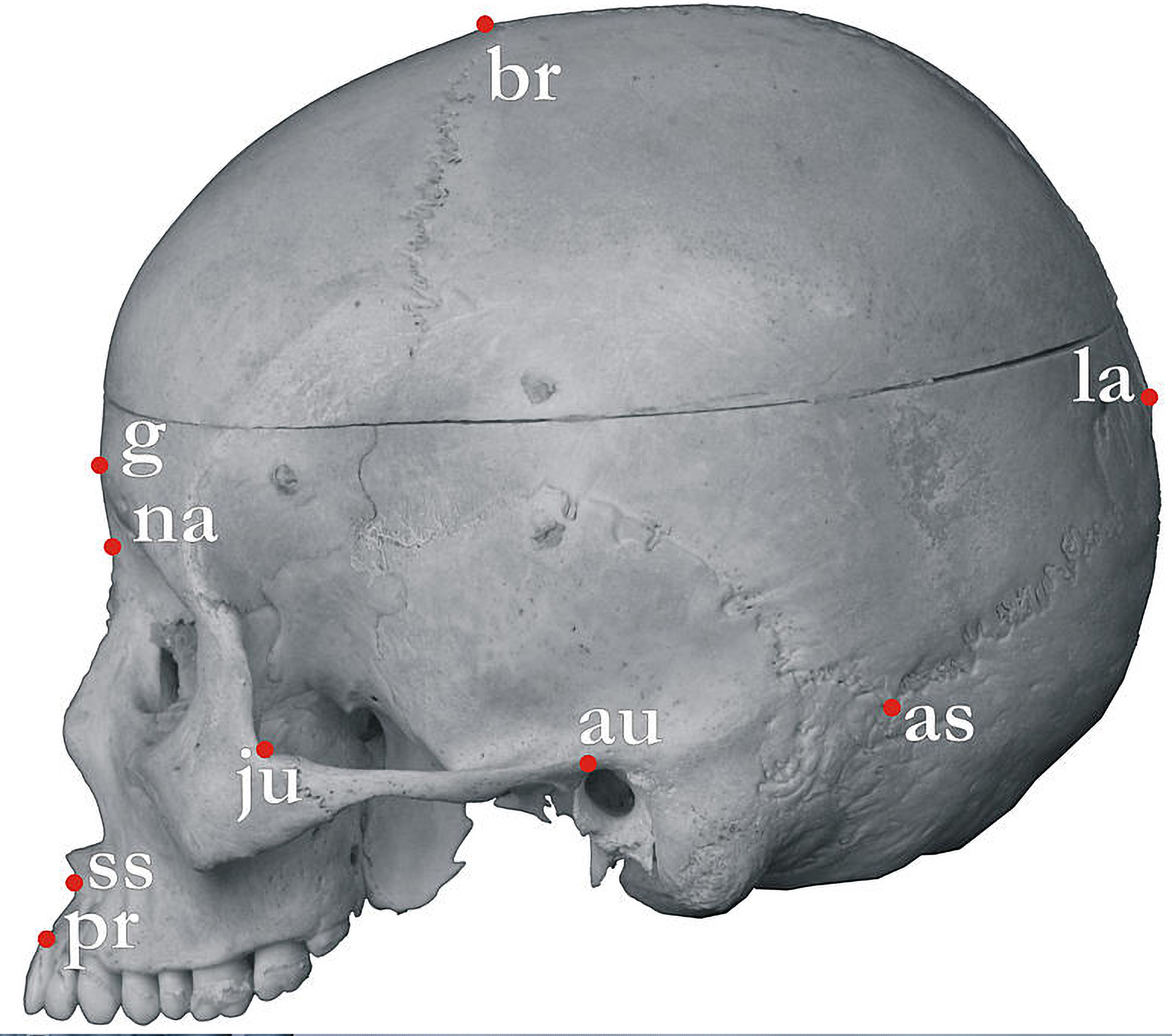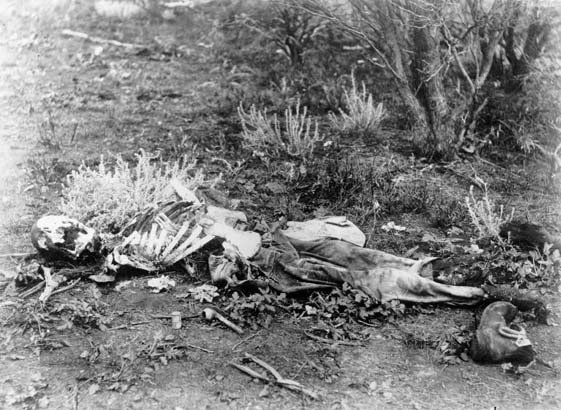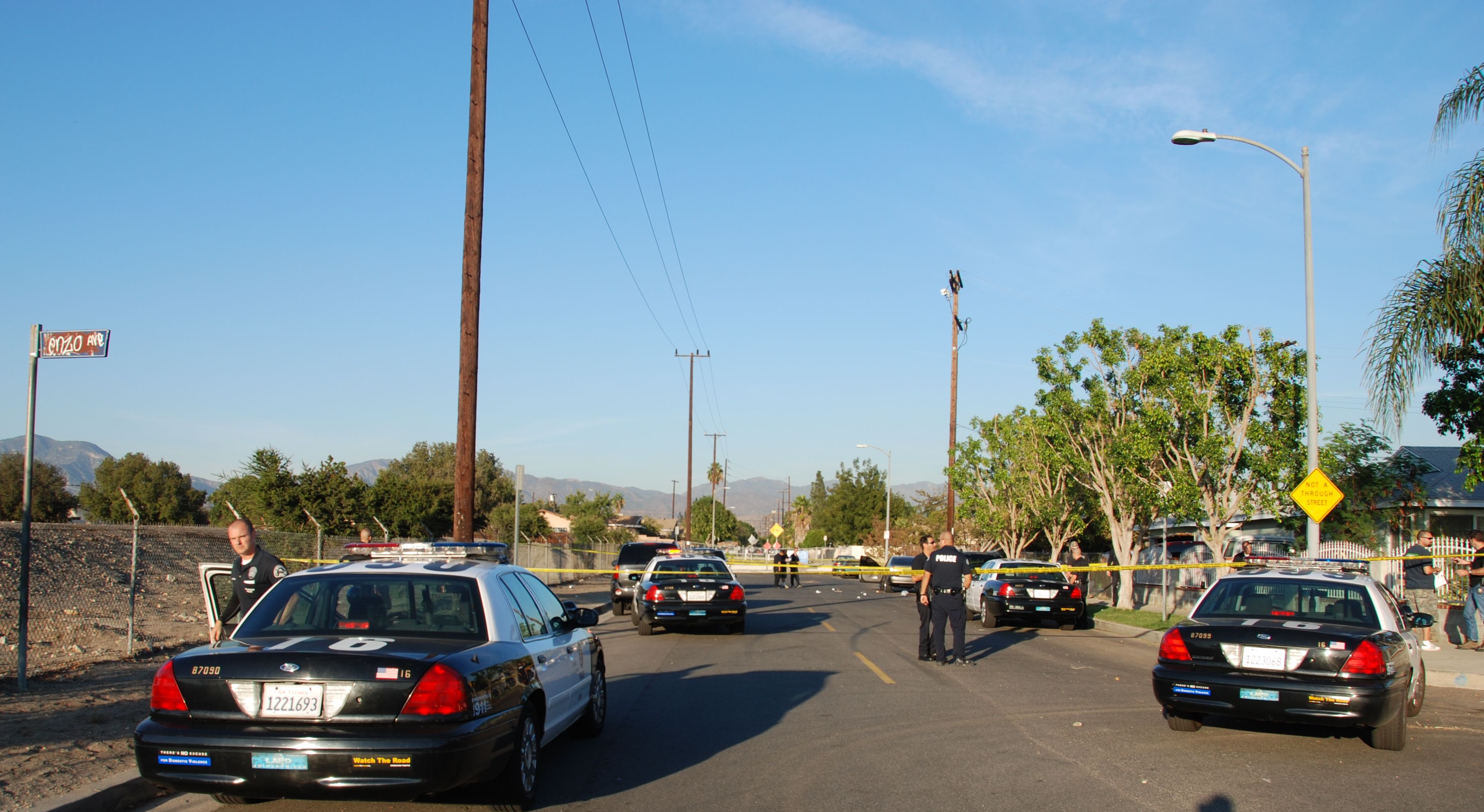|
Cranid
CranID was created in 1992 by anthropologist Richard Wright of the University of Sydney to infer the probable geographic origin of unknown crania that are found in archaeological, forensic and repatriation cases. Wright created the program to establish uniformity in cranial morphology based on the assumption that there is a high correlation between geographical location and cranial morphology. This was the first standardized program to evaluate the similarity and dissimilarity of cranial morphological characteristics of an unknown cranium and the database. Software CranID is a free software program that utilizes multivariate linear discriminant analysis and nearest neighbor discriminant analysis in conjunction with 29 cranial measurements to assess the geographic origin, which can be used to infer the ancestry of an unknown cranium. CranID compares an unknown cranium with 74 geographic samples, from 3,163 crania from 39 different populations. The measurements and landmarks used ... [...More Info...] [...Related Items...] OR: [Wikipedia] [Google] [Baidu] |
FORDISC
FORDISC is a software program created by Stephen Ousley and Richard Jantz. It is designed to help forensic anthropologists investigate the identity of a deceased person by providing estimates of the person's size, ethnicity, and biological sex based on the osteological material recovered. Features FORDISC can estimate the sex, ancestry, and stature of a given skeleton via linear discriminant analysis of standard anthropometric measurements. Although created for use in forensic anthropology, many physical anthropologists are still using the program to determine the biological profile of skeletal remains that are considered archaeological in origin. However, the results acquired from such remains may be skewed, as FORDISC is primarily designed for modern populations, which may differ in some factors from historic ones. The use of discriminant function analysis in FORDISC allows the user to sort individuals into specific groups that are defined by certain criteria. The discriminate f ... [...More Info...] [...Related Items...] OR: [Wikipedia] [Google] [Baidu] |
Osteoware
Osteoware is a free data recording software for human skeletal material that is managed through the Smithsonian Museum of Natural History. It is used by biological anthropologists to, in a standardized and consistent way, document data relevant to research and forensic applications of human skeletal remains. It has influenced other skeletal recording software, and has been successfully used at the Smithsonian for collecting data relevant to biological anthropology. Osteoware is the only free, individual-use software for the collection of data on skeletal material in anthropology. Uses When analyzing a skeletal population or individual, ranging from metric analyses to taphonomic and pathological analyses, the biological anthropologist collects various data. Osteoware is beneficial in that it organizes the range of data collected into a universal format, which is of further use to anthropologists when they need to interpret their data. If, for instance, the focus of the anthropologi ... [...More Info...] [...Related Items...] OR: [Wikipedia] [Google] [Baidu] |
Some CranID Landmarks
Some may refer to: *''some'', an English word used as a determiner and pronoun; see use of ''some'' *The term associated with the existential quantifier *"Some", a song by Built to Spill from their 1994 album '' There's Nothing Wrong with Love'' *Socialist-oriented market economy, the Vietnamese economic system occasionally abbreviated SOME * Social market economy, the German socioeconomic model abbreviated SOME * So Others Might Eat (SOME), a Washington, D.C.-based non-profit organization *SoMe, short for social media Social media are interactive media technologies that facilitate the creation and sharing of information, ideas, interests, and other forms of expression through virtual communities and networks. While challenges to the definition of ''social medi ... * ''Some'' (film), a 24 film * "Some" (song), a duet by Junggigo and Soyou * Some & Any, German pop duo {{disambig ... [...More Info...] [...Related Items...] OR: [Wikipedia] [Google] [Baidu] |
Metropolitan Local Aboriginal Land Council
Metropolitan Local Aboriginal Land Council (MetroLALC) is a Sydney-based organisation which works on issues surrounding Indigenous land rights. Formerly known as the Redfern Land Council, the organisation was established to facilitate developments in land rights cases following the passing of the Aboriginal Lands Right Act (1983). A public artwork, entitled Gadigal The Cadigal, also spelled as Gadigal and Caddiegal, are a group of Indigenous people whose traditional lands are located in Gadi, on Eora country, the location of Sydney, New South Wales, Australia. The Gadigal originally inhabited the area that ... Mural, reaching over 25 metres long and 17 meters high across the back of William House, was produced in consultation with the council. References External links MetroLALCALC {{Indigenous Australians 1983 establishments in Australia Organisations serving Indigenous Australians ... [...More Info...] [...Related Items...] OR: [Wikipedia] [Google] [Baidu] |
Bone Clones
Bone Clones, Inc. manufactures, distributes, and sells osteological reproductions of human and animal bones. Located in Chatsworth, California, Bone Clones provides these reproductions to museums, universities, medical schools, and other educational institutions. History Bone Clones creator Dave Kronen became interested in animals during his career as an artist. During the 1980s, he began processing animals in his Woodland Hills studio, carefully and painstakingly mounting the skeletons of lizards, snakes, and other animals. With a supply of animal remains from local zoos, museums began to buy the processed skeletons from Kronen. The idea of replicating real bones out of resin casting came from the increasing demand of museums for processed skeletons. The manufacturing of Bone Clones reproductions began in 1993. Product Bone Clones reproductions are made from a custom blended polyurethane resin. To avoid misrepresentation, all Bone Clones reproductions are stamped with co ... [...More Info...] [...Related Items...] OR: [Wikipedia] [Google] [Baidu] |
Bioarchaeology
The term bioarchaeology has been attributed to British archaeologist Grahame Clark who, in 1972, defined it as the study of animal and human bones from archaeological sites. Redefined in 1977 by Jane Buikstra, bioarchaeology in the United States now refers to the scientific study of human remains from archaeological sites, a discipline known in other countries as osteoarchaeology, osteology or palaeo-osteology. Compared to bioarchaeology, osteoarchaeology is the scientific study that solely focus on the human skeleton. The human skeleton is used to tell us about health, lifestyle, diet, mortality and physique of the past. Furthermore, palaeo-osteology is simple the study of ancient bones. In contrast, the term bioarchaeology is used in Europe to describe the study of all biological remains from archaeological sites. Although Clark used it to describe just human remains and animal remains (zoology/archaeozoology), increasingly modern archaeologists also include botanical remains (bot ... [...More Info...] [...Related Items...] OR: [Wikipedia] [Google] [Baidu] |
Biocultural Anthropology
Biocultural anthropology can be defined in numerous ways. It is the scientific exploration of the relationships between human biology and culture. "Instead of looking for the underlying biological roots of human behavior, biocultural anthropology attempts to understand how culture affects our biological capacities and limitations." History Physical anthropologists throughout the first half of the 20th century viewed this relationship from a racial perspective; that is, from the assumption that typological human biological differences lead to cultural differences. After World War II the emphasis began to shift toward an effort to explore the role culture plays in shaping human biology. The shift towards understanding the role of culture to human biology led to the development of Dual inheritance theory in the 1960s. In relation to, and following the development of Dual-inheritance theory, biocultural evolution was introduced and first used in the 1970s. Key research * Biocultur ... [...More Info...] [...Related Items...] OR: [Wikipedia] [Google] [Baidu] |
Biological Anthropology
Biological anthropology, also known as physical anthropology, is a scientific discipline concerned with the biological and behavioral aspects of human beings, their extinct hominin ancestors, and related non-human primates, particularly from an evolutionary perspective. This subfield of anthropology systematically studies human beings from a biological perspective. Branches As a subfield of anthropology, biological anthropology itself is further divided into several branches. All branches are united in their common orientation and/or application of evolutionary theory to understanding human biology and behavior. * Bioarchaeology is the study of past human cultures through examination of human remains recovered in an archaeological context. The examined human remains usually are limited to bones but may include preserved soft tissue. Researchers in bioarchaeology combine the skill sets of human osteology, paleopathology, and archaeology, and often consider the cultural and mo ... [...More Info...] [...Related Items...] OR: [Wikipedia] [Google] [Baidu] |
Forensic Anthropology
Forensic anthropology is the application of the anatomical science of anthropology and its various subfields, including forensic archaeology and forensic taphonomy, in a legal setting. A forensic anthropologist can assist in the identification of deceased individuals whose remains are decomposed, burned, mutilated or otherwise unrecognizable, as might happen in a plane crash. Forensic anthropologists are also instrumental in the investigation and documentation of genocide and mass graves. Along with forensic pathologists, forensic dentists, and homicide investigators, forensic anthropologists commonly testify in court as expert witnesses. Using physical markers present on a skeleton, a forensic anthropologist can potentially determine a person's age, sex, stature, and race. In addition to identifying physical characteristics of the individual, forensic anthropologists can use skeletal abnormalities to potentially determine cause of death, past trauma such as broken bones or me ... [...More Info...] [...Related Items...] OR: [Wikipedia] [Google] [Baidu] |
Northern Territory
The Northern Territory (commonly abbreviated as NT; formally the Northern Territory of Australia) is an states and territories of Australia, Australian territory in the central and central northern regions of Australia. The Northern Territory shares its borders with Western Australia to the west (129th meridian east), South Australia to the south (26th parallel south), and Queensland to the east (138th meridian east). To the north, the territory looks out to the Timor Sea, the Arafura Sea and the Gulf of Carpentaria, including Western New Guinea and other islands of the Indonesian archipelago. The NT covers , making it the third-largest Australian federal division, and List of country subdivisions by area, the 11th-largest country subdivision in the world. It is sparsely populated, with a population of only 249,000 – fewer than half as many people as in Tasmania. The largest population center is the capital city of Darwin, Northern Territory, Darwin. The archaeological hist ... [...More Info...] [...Related Items...] OR: [Wikipedia] [Google] [Baidu] |
Arnhem Land
Arnhem Land is a historical region of the Northern Territory of Australia, with the term still in use. It is located in the north-eastern corner of the territory and is around from the territory capital, Darwin. In 1623, Dutch East India Company captain Willem Joosten van Colster (or Coolsteerdt) sailed into the Gulf of Carpentaria and Cape Arnhem is named after his ship, the ''Arnhem'', which itself was named after the city of Arnhem in the Netherlands. The area covers about and has an estimated population of 16,000, of whom 12,000 are Aboriginal and Torres Strait Islander people. Two regions are often distinguished as East Arnhem (Land) and West Arnhem (Land), and North-east Arnhem Land is known to the local Yolŋu people as Miwatj. The region's service hub is Nhulunbuy, east of Darwin, set up in the early 1970s as a mining town for bauxite. Other major population centres are Yirrkala (just outside Nhulunbuy), Gunbalanya (formerly Oenpelli), Ramingining, and Maningrida. ... [...More Info...] [...Related Items...] OR: [Wikipedia] [Google] [Baidu] |
Crime Scene
A crime scene is any location that may be associated with a committed crime. Crime scenes contain physical evidence that is pertinent to a criminal investigation. This evidence is collected by crime scene investigators (CSI) and law enforcement. The location of a crime scene can be the place where the crime took place or can be any area that contains evidence from the crime itself. Scenes are not only limited to a location, but can be any person, place, or object associated with the criminal behaviours that occurred. After a crime scene has been discovered, measures must be taken to secure and protect the scene from contamination. To maintain the integrity of the scene, law enforcement must take action to block off the surrounding area as well as keep track of who comes in and goes out. By taking these precautions, officers can ensure that evidence that is collected can be used in court. Evidence that has become contaminated, tampered with, or mistreated can pollute the scene an ... [...More Info...] [...Related Items...] OR: [Wikipedia] [Google] [Baidu] |






